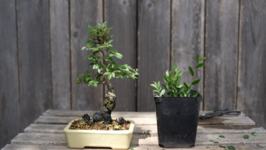Gert
Mame
- Messages
- 197
- Reaction score
- 582
- USDA Zone
- 8b
This tree was initially covered in moss at the base which caused the corking bark to fall away on the lower portion of the trunk. The tree sits in full sun all day and dries out by mid day when it receives its second watering. Even with this wet/dry cycle, moisture tends to remain on the lowest portion of the trunk and I fear it may prevent it from corking back up in the future.
Does anyone have any good suggestions for maintaining and caring for bark on corking cultivars?
Thank you!

Does anyone have any good suggestions for maintaining and caring for bark on corking cultivars?
Thank you!

